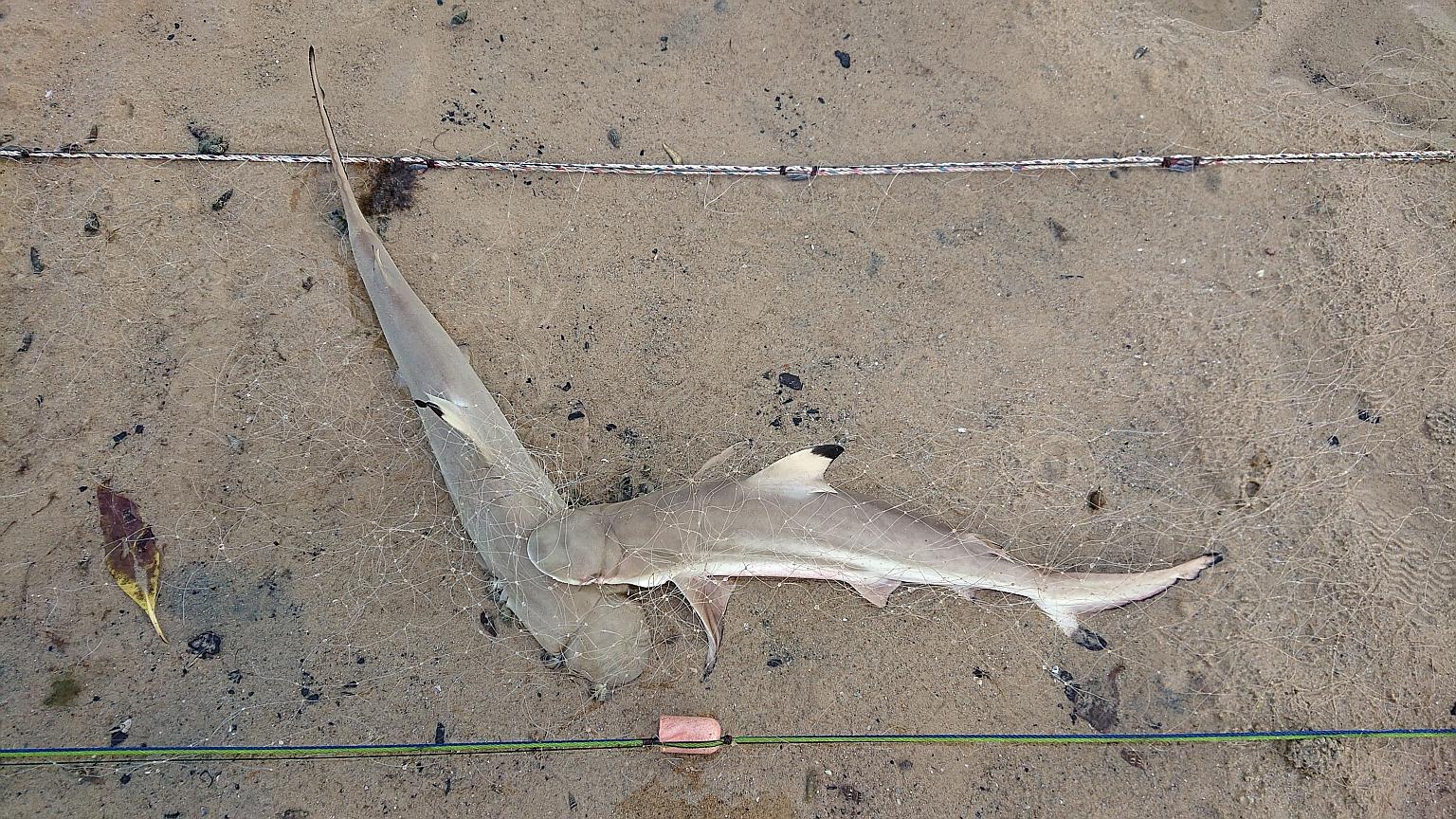Another gill net found, at least 12 young sharks dead
Sign up now: Get ST's newsletters delivered to your inbox

A screenshot taken from videos showing young black-tipped reef sharks entangled in an abandoned gill net found yesterday.
PHOTO: NEO MEI LIN
Follow topic:
An abandoned gill net - which claimed the lives of at least 12 young black-tipped reef sharks - was found by a marine biologist during a research trip to Pulau Semakau yesterday.
Dr Neo Mei Lin from the National University of Singapore's (NUS) Tropical Marine Science Institute posted about the discovery on social media platform Instagram.
Videos she took show the sharks - apex predators whose presence indicates a healthy marine ecosystem - and other creatures such as crabs entangled in the mesh.
Yesterday's find was the latest in a string of cases involving such fishing devices that ensnared marine creatures here.
Last month, a critically endangered hawksbill turtle was found dead in a gill net off Pulau Hantu. It was so tightly bound that the man who freed the carcass found its head severed from its body.
Days later, marine biologists from the Our Singapore Reefs volunteer group retrieved another gill net draped over hard coral off Lazarus Island. The casualties included two native red egg crabs, which are poisonous and cannot be eaten. One of them was still alive, even after losing at least four legs in a struggle to free itself.
Drift nets, or gill nets, are like gigantic spider webs suspended in water. They are kept vertical by floats at the top and weights at the bottom, and trap everything in their path - even creatures that those who lay the nets are not trying to catch.
The Fisheries Act, which regulates the fishing industry here, does not bar the use of gill nets, although it prohibits the use of poisons, explosives and trawl nets along Singapore's coast.
In response to queries from The Straits Times, the Singapore Food Agency (SFA) said: "In line with international practices, our local fishermen typically use small-scale drift or gill nets of less than 2km in length."
However, as these nets pose a risk to the safety of navigation, they are not allowed to be used in the navigational channels and anchorages of port waters, the Maritime and Port Authority (MPA) had said earlier.
They are also forbidden in areas managed by the National Parks Board (NParks) because of the harm they cause to marine life.
In the light of the recent cases, a group of marine enthusiasts have initiated discussions with the fishing community to gather more data that could guide the management of the country's blue spaces.
This includes information on the fish in Singapore's waters, including species that are often fished out, the sizes they grow to and whether the fish are reproducing on reefs here, said Ms Debby Ng, founder of Hantu Blog, a marine conservation group. She added that another area that not much is known about is the social element, such as the size of the fishing community here, the gear they use and the species they target.
The marine community is planning to convene a virtual meeting with fishing enthusiasts to discuss how they can help to collect data as they venture out on fishing trips.
Ms Ng, who is pursuing a PhD at the NUS Centre for Nature-based Climate Solutions, said the aim is not to impose restrictions on fishing fans.
"We want to work with agencies responsible for the marine environment and resources, such as SFA, NParks and MPA... to develop sustainable solutions for all users of the marine environment," she added.
Audrey Tan

